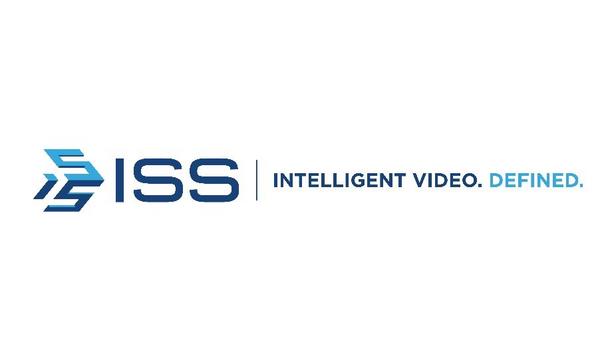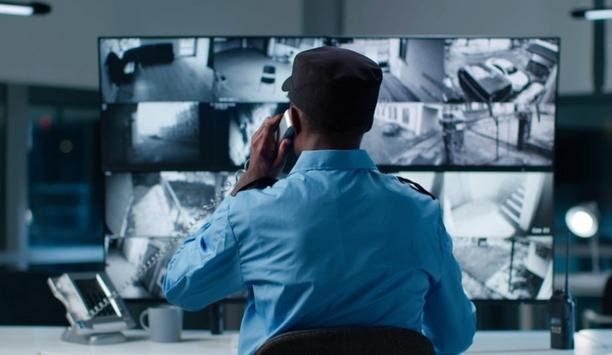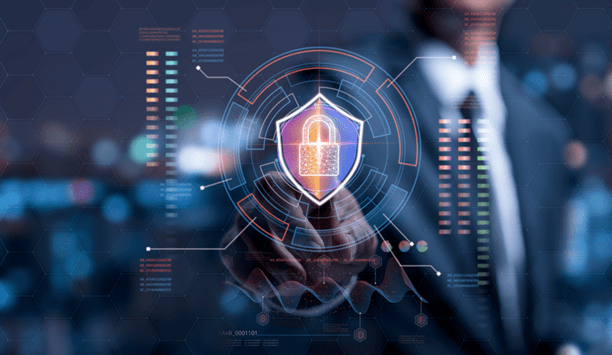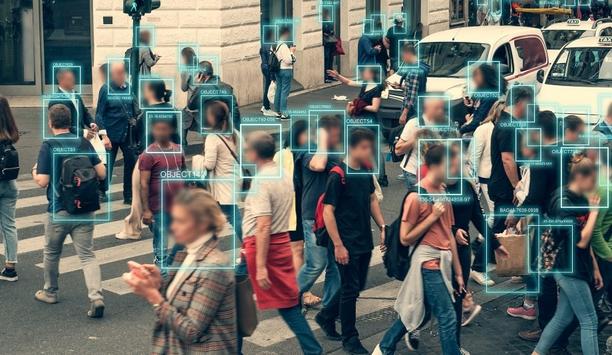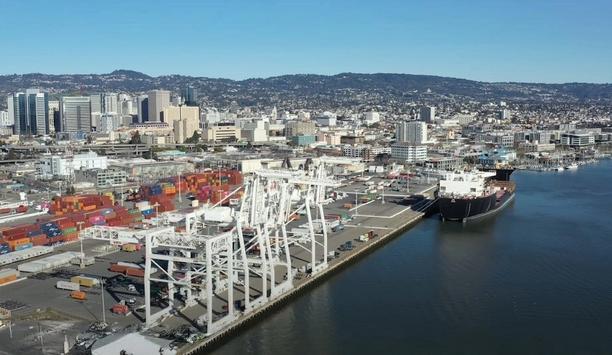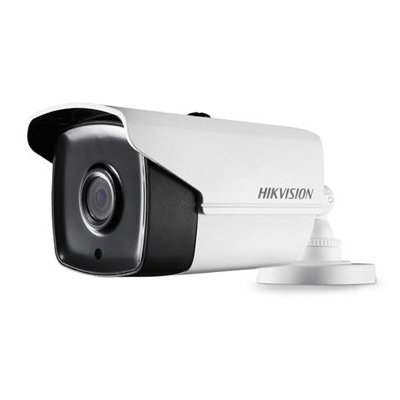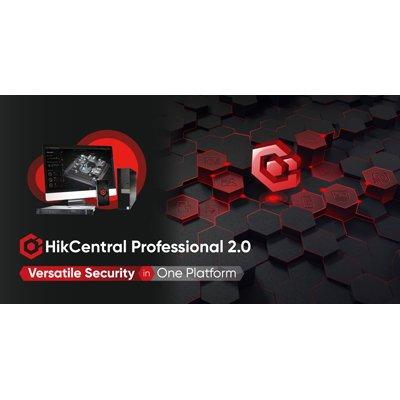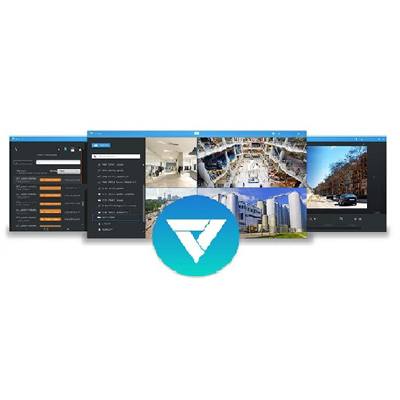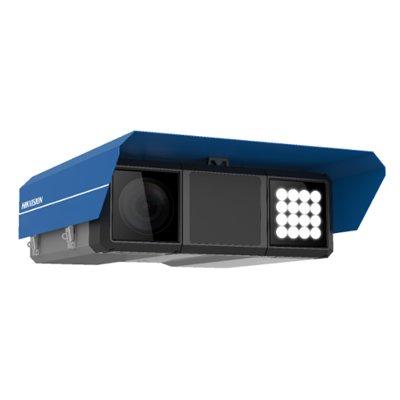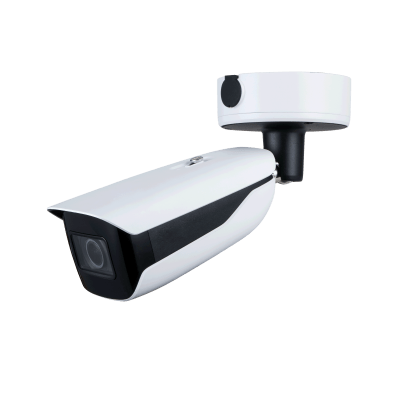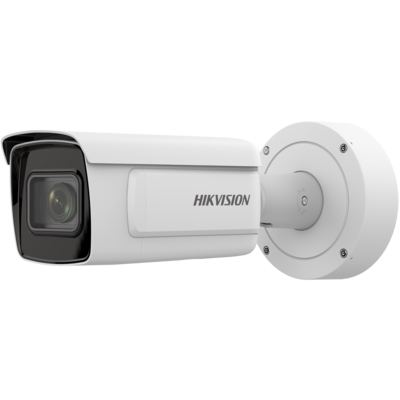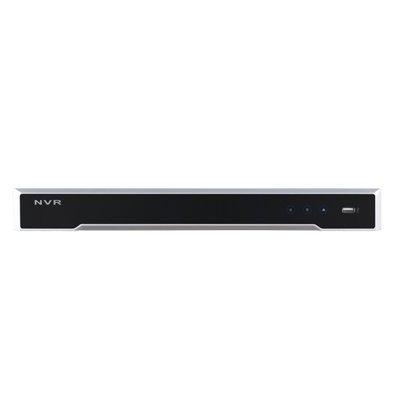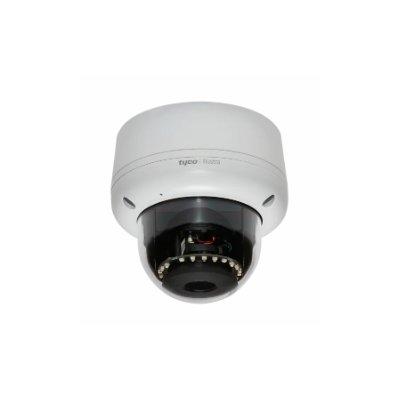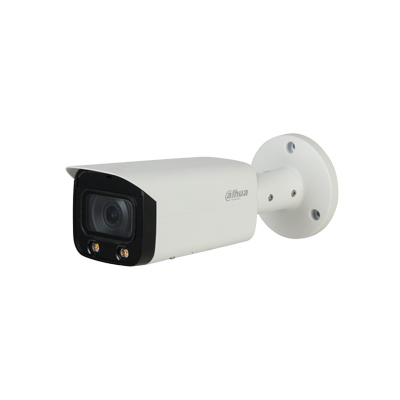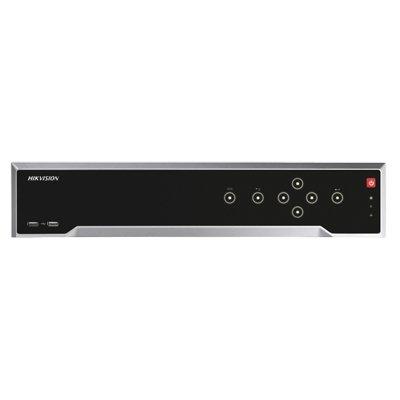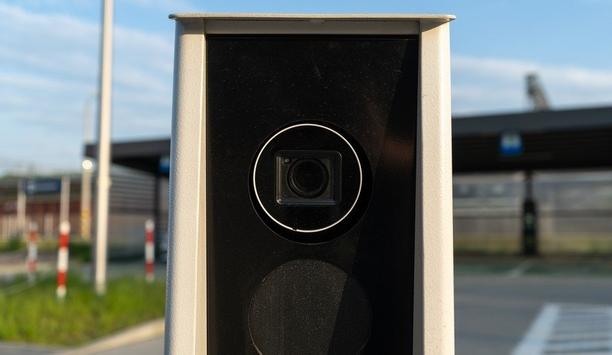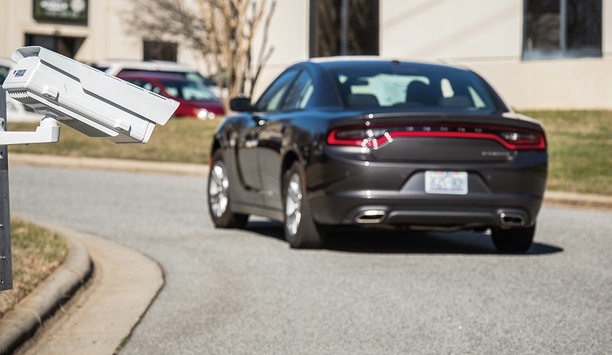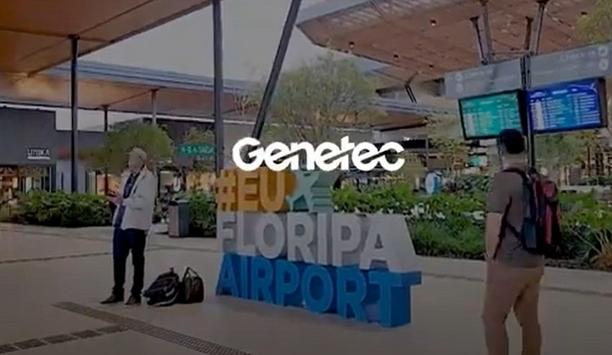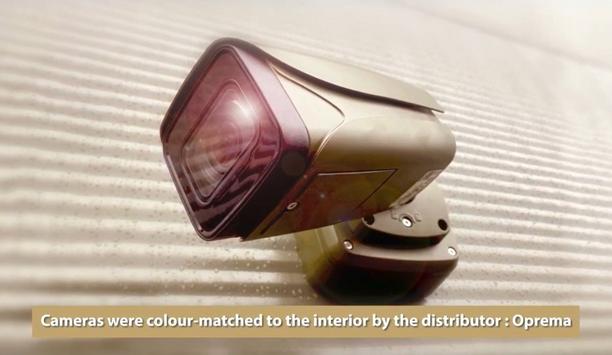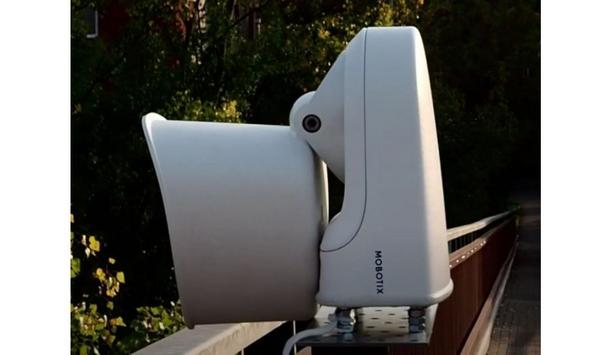License plate recognition
ISS (Intelligent Security Systems), a pioneering provider of video intelligence and data awareness solutions, announced that it has been selected to take part in the large-scale pilot phase of the Transit Tech Lab (TTL), a public-private partnership created by the Metropolitan Transportation Authority (MTA) and the Partnership Fund for New York City to accelerate innovation in public transportation. Last year, ISS, along with 17 other companies, were chosen as finalists from 150 global ap...
Robotic Assistance Devices, Inc. (RAD), a subsidiary of Artificial Intelligence Technology Solutions, Inc. continues to expand its presence within the State, Local, and Education (SLED) market sector, securing new deployments of its autonomous security solutions. RIO™ and ROSA™ devices Organisations across these sectors are turning to RAD’s innovative technology to enhance public safety, reduce security costs, and provide proactive deterrence agains...
Leveraging its decades-long expertise in identity verification, Regula has made its advanced document verification software fully compatible with a wide range of third-party ID scanners and passport readers available on the market. Border control checkpoints, hotels, banks, medical organisations, and other institutions can take advantage of the most robust, forensic-level automated document verification and authentication regardless of the devices they are currently using. ID verification sof...
Hanwha Vision has released version 6.0 of its Wisenet WAVE video management system (VMS), which gives security professionals greater control over configuring and managing their surveillance systems. This latest version supports more intuitive user management capabilities, making scaling and customising surveillance resources to the needs of individual operations easier than ever. WAVE VMS 6.0 highlights Highlights of WAVE VMS 6.0 include a redesigned user management interface, enhanced Lightw...
Matrix, an OEM in Security and Telecom solutions, is excited to announce its participation in the 27th CMDA IT Expo 2025, scheduled for February 10-11 at The Westin, Koregaon Park, Pune. As a premier platform for engaging with vendors, channel partners, and industry stakeholders, the event will showcase Matrix's innovative solutions aimed at enhancing safety, streamlining operations, and enabling seamless communication across critical sectors. Cyber-secured IP video surveillance Matrix...
AxxonSoft, a pioneer in AI-powered video management software, and Eurotech, a pioneer in edge computing solutions, are launching a strategic partnership to deliver advanced AI-enabled video surveillance solutions. AxxonSoft’s intelligent VMS This collaboration combines AxxonSoft’s intelligent video management system with Eurotech’s cybersecurity-certified ReliaCOR hardware platforms featuring the NVIDIA Jetson Orin technology for AI at the edge. In cooperation, AxxonSoft and...
News
Artificial Intelligence Technology Solutions, Inc., a global pioneer in AI-driven security and productivity solutions for enterprise clients, along with its subsidiary Robotic Assistance Devices, Inc. (RAD), announced that it has further expanded its footprint in the county government sector with the addition of a new county client. With another county government joining RAD’s expanding client base, the Company continues to modernise local security by providing AI-driven solutions. RAD’s advanced security solutions The county’s strategic security planning is hoped to include plans for dozens of extra deployments The newest county client, located adjacent to a top 20 metropolitan area, will begin its deployment with three ROSA™ security units. The county’s strategic security planning is expected to include plans for dozens of additional deployments across multiple locations, leveraging RAD’s advanced security solutions to enhance public safety and operational efficiency. These deployments and future deployments will be equipped with RAD’s SARA™ (Speaking Autonomous Responsive Agent) add-on for enhanced communication and responsiveness. Demand for RAD solutions “We are excited to welcome another county to our growing list of government clients,” commented Steve Reinharz, CEO/CTO of AITX and RAD. “The demand for RAD solutions within the county and municipal government sectors continues to grow, validating our mission to provide intelligent, cost-effective security solutions that address public safety concerns and budgetary constraints.” Evolving security challenges RAD has already set a presence in the county sector, with deployments in several nationwide RAD has already established a presence in the county sector, with deployments in several county-driven agencies nationwide. This latest addition further underscores the confidence that county agencies place in RAD’s AI-powered security technologies to address evolving security challenges. “County pioneers are seeing that RAD’s technology is more than just a tool. It is a strategic advantage,” said Mark Folmer, CPP, PSP, FSyI, President of RAD. “Our AI-driven security solutions provide real-time intervention, reduce costs, and improve overall safety.” Key features of the deployment ROSA Security Units: These units provide AI-driven detection and deterrence capabilities, helping to prevent security incidents before they escalate. SARA Integration: All deployed units will feature SARA technology, providing seamless communication, automated alerts, and enhanced situational awareness. Integration with RAD’s software suite RAD is rapidly expanding in the county and municipal sectors as demand grows for smarter RAD is rapidly expanding in the county and municipal sectors as demand grows for smarter, faster, and more cost-effective security solutions. The Company remains focused on delivering technology that protects communities while helping governments manage budgets more effectively. ROSA is a multiple award-winning, compact, self-contained security and communication device that can be installed and activated in about 15 minutes. Its AI-driven capabilities include human, firearm, and vehicle detection, licence plate recognition, responsive digital signage, audio messaging, and seamless integration with RAD’s software suite for real-time notifications and autonomous intelligent responses. ROSA’s high-resolution Two-way communication is optimised for cellular, including live video from ROSA’s high-resolution, full-colour, always-on cameras. RAD has published six Case Studies detailing how ROSA has helped eliminate instances of theft, trespassing and loitering at retail centres, hospital campuses, multi-family communities, car rental locations and construction sites across the country. AITX, through its subsidiary, Robotic Assistance Devices, Inc. (RAD), is redefining the nearly $50 billion (US) security and guarding services industry through its broad lineup of innovative, AI-driven Solutions-as-a-Service business model. Mobile robotic solutions All RAD technologies, AI-based analytics and software platforms are developed in-house RAD solutions are specifically designed to provide cost savings to businesses of between 35% and 80% when compared to the industry’s existing and costly manned security guarding and monitoring model. RAD delivers these tremendous cost savings via a suite of stationary and mobile robotic solutions that complement, and at times, directly replace the need for human personnel in environments better suited for machines. All RAD technologies, AI-based analytics and software platforms are developed in-house. Recurring revenue stream RAD has a prospective sales pipeline of over 35 Fortune 500 companies and numerous other client opportunities. RAD expects to continue to attract new business as it converts its existing sales opportunities into deployed clients generating a recurring revenue stream. Each Fortune 500 client has the potential of making numerous reorders over time.
Axis Communications, a pioneer in network video, has announced the release of two purpose-tuned cameras ideal for traffic surveillance and smart city initiatives. These powerful cameras can capture sharp licence plate images 24/7 and help law enforcement agencies improve road safety and gather valuable intelligence. AXIS Licence Plate Verifier AXIS Q1800-LE-3 is an all-in-one licence plate kit that includes everything in one device AXIS Q1800-LE Licence Plate Camera is preconfigured for accurate licence plate capture 24/7 at speeds of up to 250 km/h (155 mph). It’s fully compatible with edge or server-based LPR software from any pioneering third-party vendor, giving customers the freedom to choose the licence plate recognition analytics that best suits their needs. AXIS Q1800-LE-3 is an all-in-one licence plate kit that includes everything in one device. With AXIS Licence Plate Verifier preinstalled, it can read plates at speeds of up to 200 km/h (124 mph). An edge-based licence plate recognition approach means the camera manages processing and storage, eliminating the need for expensive servers and reducing bandwidth requirements. Integrate with VMS systems Both cameras can cover distances of up to 100 m (328 ft) during daylight. In pitch darkness, they can cover distances up to 50 m (164 ft), and up to 100 m (328 ft) with the optional accessory AXIS T90D20 IR-LED Illuminator. These purpose-tuned cameras require minimum setup. Image algorithms are preconfigured to focus solely on licence plate capture. Built on the Axis open platform, they integrate seamlessly with VMS systems and support a wide range of third-party applications. Key features Product with AXIS Licence Plate Verifier preinstalled Product ready for 3rd party software Purpose-tuned for licence plate recognition Read licence plates up to 250 km/h (155 mph) Capture/reading range up to 100 m (328 ft) Robust design withstands tough weather Electronic image stabilisation With a robust design, these licence plate cameras ensure reliable performance in extreme weather. They include a built-in weather shield and can withstand hurricane-force winds of up to 60 m/s (134 mph). Electronic image stabilisation ensures stable images when the camera is subject to vibrations. Furthermore, a wide range of installation accessories is available for flexible mounting options. Furthermore, with gray-coloured housing and a black weather shield, they blend into any traffic environment.
Matrix Comsec, a renowned OEM in Security and Telecom solutions, is thrilled to participate in the 3rd edition of the Saurashtra Security Surveillance Association’s (SSSA) Business Expo 2025. On January 10th and 11th, 2025, at Christ College, Munjka, Rajkot, this esteemed event will gather distributors, system integrators, consultants, and other key stakeholders of SSSA. Matrix will highlight its cutting-edge solutions to elevate safety, operational efficiency, and seamless communication across these critical sectors. IP video surveillance solutions Matrix’s IP Video Surveillance solutions are engineered to deliver seamless security management for industries, such as IT, Security, Manufacturing, and more. End-to-end Cyber-secured Video Surveillance Solutions: Matrix network cameras and video management software provide robust security while adhering to global compliance standards like OWASP, safeguarding sensitive data, ensuring regulatory compliance, and mitigating cyber threats to enhance trust and operational reliability. Smart Analytics: Advanced Video Analytics, including intrusion detection, tripwire detection, motion detection, and licence plate recognition, bolster proactive security measures. Remote and Centralised Monitoring: Matrix video surveillance solutions enable centralised management with real-time alerts via SMS, email, or WhatsApp, ensuring continuous monitoring and swift incident response. These solutions are designed to seamlessly integrate into IT, Security, and Manufacturing infrastructure, offering a scalable, future-ready security setup. Access control solutions Matrix Access Control Solutions address the unique challenges of managing access in IT, Security, Manufacturing, and other critical industries. Multi-Location Access Management: Simplified and efficient access control solutions tailored for system integrators and consultants managing diverse projects. Elevator Control Integration: Improve safety and user convenience by regulating floor-wise access in high-rise buildings. Visitor Management: Streamline visitor entry with pre-registration, approval workflows, and live tracking for enhanced security. By integrating advanced features with a seamless user experience, Matrix Access Control Systems deliver a robust and scalable solution for IT, Security, Manufacturing, and other diverse industries. Time-attendance solutions Matrix Time-Attendance solutions are designed to deliver efficient workforce management for real estate, hospitality, and industrial operations, ensuring streamlined processes. Job Processing and Costing: Automates workforce allocation and job tracking, boosting productivity and operational efficiency. Field Visit Management: Enables real-time reporting of field employees, enhancing accountability and workflow optimisation. Easy Attendance Management: Offers self-service options for attendance and leave management, ensuring convenience and flexibility for employees. These solutions are tailored to meet the needs of system integrators and consultants, simplifying workforce management for Industrial projects and operations. Telecom solutions Matrix’s Telecom Solutions are reliable and scalable and designed for enterprise-grade projects and diverse industrial needs. Unified Communication Platforms: Streamline collaboration among project teams operating across multiple locations for enhanced efficiency. VoIP Gateways: High-performance solutions that optimise communication workflows in residential and commercial projects. Scalable Solutions: Designed to adapt to expanding infrastructure, ensuring long-term reliability and value. These solutions simplify communication challenges, offering system integrators and consultants effective tools for various industries. Why visit Matrix at SSSA Business Expo 2025? At SSSA Business Expo 2025, Matrix will showcase live product demonstrations and interactive sessions, highlighting how its solutions integrate seamlessly into diverse industry needs. Visitors will gain valuable insights into Matrix’s expertise in delivering scalable, secure, and reliable systems designed for IT, Security, Manufacturing, and other critical sectors.
Eagle Eye Networks, the global pioneer in cloud video surveillance, launched the latest in a suite of cabinet systems that empower businesses to put high-performance AI-powered security cameras wherever they’re needed outdoors, including remote locations without power or internet. Cabinet systems can be standalone or an extension of an existing video surveillance system. They come equipped with Eagle Eye’s signature cybersecurity protections and AI-capabilities—such as AI-powered Smart Video Search, real-time alerts, Licence Plate Recognition and AI analytics—that tens of thousands of business owners around the globe rely on to manage security and improve business efficiency. Eagle Eye Cabinet Systems Suite Eagle Eye Cabinet Systems are weatherproof and have a cellular modem for connectivity Eagle Eye Cabinet Systems are weatherproof and include a cellular modem for reliable connectivity. They are pre-configured and pre-assembled for easy, economical installation in remote or hard-to-wire locations such as construction sites, critical infrastructure outposts, temporary event locations, parking lots and public spaces. The Eagle Eye Cabinet Systems Suite includes: Bridge Cabinets (SS100): Install up to seven outdoor cameras and enable AI analytics and licence plate recognition (LPR). A great fit for gated communities, gated parking garages, subdivisions, and anywhere LPR is needed. Direct Cabinets (SS210): Connect one or two cameras without an internet connection. Ideal for locations with power but no internet such as construction sites, driveways, warehouses, and outdoor spaces with wired streetlights. Anywhere Cabinets (SS212): Install cameras in any location — no power or internet required. Perfect for remote areas such as farms, parking lots, construction sites, and warehouses. Managing security “The Eagle Eye Cabinet Systems Suite solves common problems that businesses encounter in securing locations that are not wired for power or lack an internet connection,” said Dean Drako, Founder and CEO of Eagle Eye Networks. “Organisations are finding that deploying cameras and managing security in remote areas, gated entry areas, parking lots, temporary event locations or construction sites is considerably easier, more reliable, cybersecure and economical with Eagle Eye Cabinet Systems.” CapEx requirements Eagle Eye Cabinet Systems can be ordered as an outright purchase or as Eagle Eye Complete, an OpEx purchasing plan that provides a lifetime warranty and reduces initial CapEx requirements. Complete subscriptions include all needed hardware, the cellular modem, and data plan, all for one consistent recurring cost.
Matrix Comsec, an OEM in Security and Telecom solutions, is excited to announce its participation in the 7th edition of MEP Conclave 2024. Scheduled for 12th and 13th December 2024, this prestigious event will be held at Hyatt Ahmedabad, Vastrapur, bringing together, MEP Consultants, MEP Contractors, and System Integrators from the commercial, residential, institutional, and hospitality MEP industry. With a focus on these industries, Matrix aims to showcase its innovative solutions tailored to enhance safety, efficiency, and communication in these domains. IP video surveillance solutions Matrix’s IP Video Surveillance solutions are designed to ensure seamless, security management for residential and commercial MEP projects. End-to-end Cyber-secured Video Surveillance Solutions: Matrix network cameras and video management software ensure robust security while adhering to global compliance standards like OWASP, safeguarding sensitive data, ensuring regulatory compliance, and protecting against cyber threats to enhance trust and operational reliability. Smart Analytics: Intelligent Video Analytics such as intrusion detection, tripwire detection, motion detection, and license plate recognition enhance security. Remote and Centralised Monitoring: Matrix video surveillance solutions provide centralised surveillance with real-time SMS/E-mail/WhatsApp notifications, ensuring uninterrupted monitoring of premises. These solutions are crafted to seamlessly integrate into MEP infrastructure, providing a future-ready and scalable security setup. Access control solutions Matrix Access Control Solutions cater to the unique challenges of managing access in diverse residential and commercial projects. Multi-Tenant Access Management: Tailored solutions to handle multi-location, multi-tenant access needs. Elevator Control Integration: Enhance safety and user convenience by managing access to specific floors in high-rise buildings. Visitor Management: Efficient visitor entry with pre-registration, approval workflows, and live tracking for enhanced security. By combining advanced features with a seamless user experience, Matrix Access Control Systems offers a robust solution for securing diverse MEP industries. Time-attendance solutions Matrix Time-Attendance Systems ensure efficient workforce management for Real estate, Hospitality, and other Industrial operations. Job Processing and Costing: Automates workforce allocation and job progress tracking for better productivity. Field Visit Management: Real-time reporting of field employees, ensuring accountability and optimised workflow. Easy Attendance Management: Provides employees with self-service options for attendance and leave management on the go. These advanced systems help streamline workforce management for MEP consultants and real estate developers. Telecom solutions Matrix’s Telecom Solutions deliver reliable and scalable communication systems, perfect for MEP projects. Unified Communication Platforms: Enable seamless collaboration between project teams across various locations. VoIP Gateways: High-performance gateways that optimise communication for operational efficiency in residential and commercial developments. Scalable Solutions: Designed to grow with expanding infrastructure, ensuring long-term investment returns. These solutions are vital for simplifying communication challenges in diverse MEP-focused industries. Why visit Matrix at MEP Conclave 2024? At MEP Conclave 2024, Matrix will offer live product demonstrations and interactive sessions to highlight how its solutions integrate seamlessly into modern infrastructure. Visitors will gain insights into Matrix’s expertise in designing scalable, secure, and reliable systems that cater to the unique needs of the Commercial, Institutional, and Hospitality MEP Industry.
Recognising the growing demand from chain enterprises to boost operational efficiency through cloud security solutions, the global pioneering security solution provider - VIVOTEK (3454-TW) has announced a partnership between its AI-Powered cloud surveillance platform, VORTEX, and Kabob, a startup providing one-stop cloud management solutions for retail stores. This collaboration aims to revolutionise retail management, initially targeting the US, Japan and Taiwan markets, benefiting over 450 chain brands and approximately 15,000 stores. Advanced AI-Powered insights Kabob users can log in to the VORTEX platform through their accounts to access unlimited device connections and user accounts with a simple subscription, enabling remote management of store surveillance, real-time operations monitoring and advanced AI-Powered insights. With VORTEX, retailers can analyse crowd flow patterns, recognise vehicle licence plates and refine marketing strategies to unlock new business opportunities. Boosting retail security efficiency VORTEX's high versatility and robust security features are specifically designed for business environments Managing hundreds or even thousands of retail outlets simultaneously poses a significant challenge for chain enterprises. VORTEX's high versatility and robust security features are specifically designed for fast-paced business environments, offering smart management services for retail stores, shopping malls, and other venues requiring multi-site monitoring. VORTEX's flexible hybrid cloud architecture provides seamless integration with its cloud-native cameras for precise AI video analytics and anomaly alerts. For retailers using existing network cameras, VORTEX enables cloud connectivity via VIVOTEK’s network video recorders, facilitating real-time remote management and event detection. This ensures store safety, smooth operations and maximum cost-effectiveness and security performance. Incorporates secure network transmission VORTEX incorporates advanced encryption, secure network transmission, and privacy management measures to safeguard user data and video information, including end-to-end encryption, Single Sign-On (SSO) and Multi-Factor Authentication (MFA). Moreover, VORTEX offers up to 10 years of warranty and flexible subscription licencing, all compliant with the US National Defense Authorisation Act (NDAA) and Trade Agreements Act (TAA). AI-driven insights to enhance customer engagement Beyond security, VORTEX leverages its AI technology to identify hotspots with high foot traffic and recognise licence plates of frequent visitors. By integrating these capabilities with in-store marketing activities, VORTEX boosts customer interactions, increases sales and enhances customer satisfaction. VIVOTEK stated, "By combining video analytics technology with our camera hardware-software integration and the VORTEX cloud platform, alongside Kabob's extensive experience in retail, we aim to deliver an all-in-one solution that maximises benefits for retailers while creating a safer and more satisfying consumer experience." Kabob added, "VORTEX’s AI-powered security services provide users with cost-effective smart security and operational solutions. We believe this innovative cloud platform will deliver a safer, more convenient and intelligent experience in commercial environments."


Expert commentary
In the past, security and IT teams operated independently, but today collaboration is critical. Modern security systems rely on various devices and systems that are linked to internal and external networks. Without IT involvement, physical security can become a weak point for cybersecurity. Although these groups have made headway in partnering up to ensure the successful implementation of new solutions, often there’s still a disconnect. Differing skills, priorities, and unique ways of thinking have contributed to siloed ways of working. Unified security technologies Thankfully, solutions do exist to help improve coordination between teams and departments Other factors can also make collaboration more difficult. Budget limitations and staff turnover may result in a lack of specialised security training among operators, who don’t know which stakeholders to engage or when. Staff may be willing to collaborate, but do they know who should be alerted when there’s an event? If everyone is alerted to everything, those who don’t need that information will eventually start to tune out. Thankfully, solutions do exist to help improve coordination between teams and departments. Unified security technologies can enhance collaboration, streamline communication, and improve response times. This enables cross-functional teams to respond faster, make better decisions, and work together to enhance overall security. IT and physical security teams Physical security teams are experts at identifying and mitigating physical threats to the organisation. IT teams know the ins and outs of keeping systems and networks secure. Both roles and skill sets are critical to securing the enterprise, but siloed operations create barriers to effective collaboration. Because IT and physical security teams have different mandates, meeting the needs of both can be tricky. In some organisations, different departments or specialties also have their own reporting structure and may have different ways of working. Silos may even exist within departments. Overcoming challenges to collaboration Addressing these challenges is the first step toward improving collaboration For example, floor security, dispatchers, investigators, and loss prevention specialists may be used to operating independently in their day-to-day routines. They may not always share data or involve each other in decision-making. Pioneers of these departments are used to being in charge of their domains and may resist initiatives that appear to threaten this independence. Addressing these challenges is the first step toward improving collaboration. Organisations need effective tools to filter out the noise and ensure that the right people get the information that’s relevant to them every time. There are tools available to help teams collaborate effectively, stay accountable for completing tasks, and keep track of what’s been done while maintaining departmental goals and objectives. The right technology can help break down silos The first step to improve collaboration is to break down silos between your security systems. Choosing a unified security platform creates a solid foundation for cross-functional collaboration. It ensures that your physical security and IT teams are reading from the same database. Everyone can see potential risks across both digital systems and physical sites. Unified security solutions centralise monitoring, alarm management, and reporting in a single interface. This helps security teams manage incidents, run investigations, and oversee all security policies. Risks of real-time cybersecurity Data from security systems can be useful to analyse and improve operations and customer experience Within the same platform, IT experts can have a comprehensive view of real-time cybersecurity risks. They can also implement a single data protection and privacy strategy across all locations. Built-in cybersecurity tools help to standardise encryptions, multi-factor authentications, user privileges, and more across the enterprise. In many organisations, colleagues from other departments also find great value in having access to this information. Data from security systems can be useful to analyse and improve operations, customer experience, facilities management, and more. There are many ways to collaborate using a unified security system. Depending on your goals and operating procedures, you have different ways to go about it. The starting point is always to simply get everyone on the same page. Leveraging technology for more effective collaboration A unified security software platform can not only manage your video surveillance, access control, automatic licence plate recognition (ALPR), and other physical security systems, but also data from many other kinds of IoT devices and databases. The volume of data is immense, but thankfully these systems can offer ways to filter out the noise and keep operators focused on the most relevant data for their work. Being able to quickly gather, analyse, and share data with other team members can make or break an emergency response. In one case, an attack at a convention centre was thwarted after a team member monitoring social media mentions of an event noticed threats published online. When security operators were alerted, they were able to use video analytics to identify the suspect at the event. Using a unified security platform, the operators were able to send the camera view to other team members near the suspect. In the end, they were able to stop the attack through multi-departmental collaboration. Right security platform The right security platform can also help you drive more effective and proactive operational decision-making The right security platform can also help you drive more effective and proactive operational decision-making. When bringing datasets from disparate systems together, it's easier to discover relationships and make changes to business operations. For example, in a retail environment, combining access control, heat maps, and point of sale (POS) data can provide insights into customer activity. This kind of data may be used for things like loss prevention, but it can also be helpful to improve customer experience by improving traffic flow or directing staff toward the busiest areas of the store. The importance of automation One of the most important ways a unified security platform can optimise operations and encourage collaboration is to leverage automation to prioritise and triage alerts. This reduces false alarms and streamlines emergency responses. The reality today is that security operators aren’t always specialists. In K-12 school campuses, for example, the person monitoring the system is often an administrator or teacher. A non-specialist operator may be comfortable using the system in their day-to-day routine, but what about when the unexpected happens? If they don’t know what to do in an emergency, precious time may be wasted while they look up written instructions or call a colleague to help. Instead of keeping your SOPs in a paper binder, you can digitise them so that your security platform guides operators. They immediately have the steps to follow in an emergency. The system can even automatically alert internal or external stakeholders if certain conditions are met. Pros of automation Automation may also reduce false alarms. Nuisance alerts are a real problem for many organisations because they pull resources away from important tasks. When there are many false alarms, operators can also become desensitised to them, which slows response in a real emergency. Nuisance alerts are a real issue for many corps because they pull help away from vital tasks There are several ways that a unified security platform reduces false alarms. When data from multiple systems is brought into the same platform, a door-forced-open event can be cross-referenced with footage from nearby cameras or motion sensors. The system is programmed to do this automatically and issue a priority alert if there’s both a door forced open and motion detected in a restricted zone. Or, when a door open alert happens, the system can direct operators to first check nearby cameras and then decide whether or not to send a security guard to investigate. Every organisation is unique and automations will reflect that. Stadiums or public transit may want to automate notifications to stakeholders’ phones, change the message on a digital marquee, or broadcast a public announcement when there’s something to communicate. In a school context, perhaps there is a panic button under the front desk, which triggers a threat alert. When the button is pressed, all classroom doors are locked from the outside. Teachers can get a text message notification warning them about the threat, and local police are alerted instantly. Practical steps for building a collaborative security environment As exciting as it can be to explore the possibilities of new technologies, it’s important to have realistic expectations. Start with small steps and simplify as much as possible. Operators require time and training to adapt to new systems, and teams that have been working independently may need time to develop rapport and trust with each other. When adopting new technologies, a phased approach is often best to avoid overwhelming staff. If staff are resistant to change, focus on understanding their perspective: what are they trying to accomplish? What motivates them? What are they afraid of? Once you understand what’s driving their objections, you can come up with solutions to work through concerns. In today's rapidly evolving security landscape, fostering collaboration between physical security and IT teams is no longer a luxury—it's a necessity. By breaking down silos, leveraging integrated security technologies, and embracing data-driven decision-making, organisations can significantly enhance their operational efficiency and response capabilities.
As city managers, law enforcement agencies, and first responders face mounting pressure to combat crime and respond to emergencies with limited resources, real-time crime centres empowered by a new generation of data-driven technologies are emerging as an effective force multiplier. Real-time crime centres Real-time crime centres (RTCCs) serve as centralised hubs where dedicated personnel leverage pioneering-edge technologies to analyse diverse data streams and provide critical support to law enforcement and emergency operations. These 24/7 facilities are transforming how agencies gather, process, and act upon information, enabling more proactive and efficient policing strategies. The core functions of RTCCs These centres provide officers with unprecedented situational awareness and real-time intelligence At their core, RTCCs are tasked with three primary objectives: enhancing safety, facilitating identification, and supporting apprehension. By integrating data from a wide range of data sources, these centres provide officers with unprecedented situational awareness and real-time intelligence. Integrated data approach This integrated data approach allows RTCCs to alert officers to potential threats, quickly identify suspects, and guide responders during critical incidents. For instance, in the event of a robbery, RTCC operators can rapidly search camera and licence plate data to track suspect vehicles, significantly improving the chances of a swift arrest. According to the Bureau of Justice Assistance at the U.S. Department of Justice, the mission of an RTCC is to centralise a broad range of current and evolving technologies, coordinate sworn and non-sworn human resources, and direct the attention to high-crime areas, active crimes in progress, high-profile or highly recidivistic offenders, and large-scale public events that may require law enforcement presence or response. The technology powering RTCCs The effectiveness of an RTCC hinges on its ability to seamlessly integrate a wide array of technologies: Open Platform Video Technology: At the heart of many crime centres is an open platform video management software (VMS) that serves as the central nervous system, unifying diverse data streams into a cohesive operational picture. By leveraging open APIs and SDKs, the VMS can incorporate a wide range of cameras, sensors, and analytics tools. This data-driven approach to video technology enables seamless alert distribution to both the RTCC and field officers via mobile applications. IP Camera Networks: The eyes of an RTCC, these systems combine fixed, PTZ, multi-sensor, thermal, and other specialty cameras to provide continuous city monitoring. Strategically placed throughout urban areas, cameras offer comprehensive coverage of critical locations such as transportation hubs, commercial districts, and high-crime zones. This network forms the foundation for real-time monitoring and incident response. Sensor Arrays: Beyond visual data, RTCCs employ various sensor technologies. Acoustic sensors can detect sounds such as gunshots, shouts for help, breaking glass, and other sounds instantly alerting officers and cueing nearby cameras. Environmental sensors monitor air quality for gasses, smoke, and other non-visible hazards. Licence Plate Recognition (LPR): LPR systems act as a force multiplier, continuously scanning for vehicles of interest. By generating real-time alerts for stolen or wanted vehicles, these systems significantly enhance the ability to track suspects and recover stolen property, contributing to reduced auto theft rates. Aerial Surveillance: Many RTCCs incorporate drone technology, providing on-demand aerial perspectives of developing situations. This capability is particularly valuable for monitoring large-scale events, assessing natural disasters, supporting operations in hard-to-reach areas, and serving as a powerful first response for crime scene situational awareness. AI-Powered Analytics: At the heart of many RTCC operations are sophisticated AI algorithms that analyse video data in real-time. These systems can identify a range of suspicious activities, from unattended packages to unauthorised intrusions. By rapidly processing vast amounts of video data, they help operators focus on potential threats and anomalies. Geospatial Mapping: To make sense of the influx of data, RTCCs rely on advanced mapping software. These tools visualise events, alerts, and data streams geographically, allowing operators to quickly identify patterns, clusters of activity, and relationships between incidents. Database Integration: RTCCs maintain direct connections to various law enforcement databases, including local, state, and federal resources like the National Crime Information centre (NCIC). This integration allows for rapid background checks and threat assessments, providing crucial context for ongoing operations. Cloud Infrastructure: The scalability and flexibility of cloud computing are revolutionising RTCC capabilities. Cloud and hybrid solutions offer secure, off-site storage and facilitate easy data sharing between agencies. This approach not only reduces initial costs but also allows for incremental upgrades, making advanced RTCC functionality accessible even to agencies with limited budgets. Real-world impact RTCC operators tracked shooting suspects via camera feeds, guiding officers to their location The proliferation of RTCCs across the United States with over 80 centres in operation speaks to their proven effectiveness. Cities that have implemented these high-tech command centres are reporting significant improvements in response times, clearance rates, and overall public safety. Real-time surveillance In Winston-Salem, North Carolina, the local RTCC leverages over 1,300 live video feeds to provide real-time surveillance across the city. This extensive network, combined with gunshot detection technology and licence plate readers, has already demonstrated its value. In a recent incident, RTCC operators were able to track shooting suspects via camera feeds, guiding officers to their location for a quick apprehension. Video analysis by RTCC Similarly, Newport News, Virginia, saw an immediate impact after launching its RTCC in 2021. The centre has played a crucial role in solving homicides caught on video and rapidly closing a series of carjacking cases. These success stories underscore the game-changing potential of RTCCs when it comes to solving crimes and gathering evidence. In Memphis, Tennessee, video analysis by RTCC detectives helped identify a shooter in custody following an incident at a community basketball court even when no witnesses had come forward. Identifying suspects with RTCC Officers and analysts can view street and body camera footage to monitor crowds at parades The Jackson Police Department in Mississippi has seen similar benefits since building an RTCC in 2019, part of a broader effort that included deploying 100 cameras and 271 body cams. Officers and analysts can view street and body camera footage to monitor crowds at parades and other events. During pursuits, the cameras provide extra surveillance, allowing officers to identify suspects or witnesses to help solve crimes. Enhancing crime mitigation and emergency response While RTCCs have proven their worth in responding to active incidents, their true potential lies in proactive crime prevention and enhanced emergency preparedness. By leveraging advanced analytics and integrated data sources, RTCCs are evolving into powerful predictive tools for law enforcement. Pattern recognition algorithms For instance, pattern recognition algorithms can analyse historical crime data alongside real-time video feeds to identify potential hotspots for criminal activity. This allows law enforcement to strategically deploy resources, increasing visible presence in high-risk areas before crimes occur. Similarly, anomaly detection systems can alert RTCC operators to unusual behaviors or suspicious activities, enabling early intervention in potentially dangerous situations. Asset and property protection, automated alerts RTCCs can monitor critical infrastructure, government buildings, and other high-value assets 24/7 Asset and property protection is another area where RTCCs excel. By integrating with access control systems and using AI-powered video analytics, RTCCs can monitor critical infrastructure, government buildings, and other high-value assets 24/7. Automated alerts for perimeter breaches, unauthorised access attempts, or suspicious objects left in restricted areas allow for an immediate response, significantly enhancing security postures. Emergency response and preparedness In terms of emergency response and preparedness, RTCCs serve as vital command and coordination centres during crises. Whether facing natural disasters, major accidents, or other large-scale emergencies, RTCCs provide a centralised hub for information gathering and dissemination. Real-time video streams from affected areas, combined with data from environmental sensors and emergency service communications, allow for rapid situational assessment and coordinated response efforts. Post-incident investigation and analysis RTCCs can also play an active role in post-incident investigation and analysis. The ability to quickly compile and analyse vast amounts of data from multiple sources can significantly accelerate case resolution and help identify patterns to prevent future incidents. As RTCCs continue to evolve, their capacity for integrating diverse data streams and leveraging advanced analytics positions them as indispensable tools in modern law enforcement strategy. The future of technology-driven policing The integration of artificial intelligence and machine learning promises to enhance video analytics As RTCCs continue to evolve, they are likely to incorporate even more advanced technologies. The integration of artificial intelligence and machine learning promises to enhance video analytics capabilities, enabling faster and more accurate threat detection. Additionally, the expanding use of drones, subject to FAA regulations, could provide RTCCs with cost-effective aerial surveillance options. Effective and ethical operations However, the implementation of RTCCs is not without challenges. Agencies must navigate issues of privacy, data security, and community trust. Ongoing training for personnel and careful planning is essential to ensure these centres operate effectively and ethically. Data-driven approach Despite these hurdles, the trend toward technology-driven policing shows no signs of slowing. RTCCs represent a shift from reactive to proactive law enforcement strategies, offering a data-driven approach to crime prevention and response. As these centres become more prevalent, they will play an increasingly vital role in helping agencies maximise their resources and make informed decisions, ultimately contributing to safer communities for all.
As we head into a new year, it’s fair to say that it isn’t easy out there for the security integrator community. That’s understandable given the big ruptures felt in the market for physical security in 2023. Typically, Commercial Real Estate (CRE) landlords are the biggest and most influential buyers of physical security hardware and software, but this is starting to wane as heightened borrowing costs and biting inflation cause real estate valuations to plunge. Building security upgrades A lot of CRE landlords are in a fight for survival which unfortunately doesn't leave much room for budget spend on building security upgrades. This state of affairs is a problem for security integrators with extensive connections in the CRE space. Where do they pivot their services to keep their business growing in 2024? From the conversations I’ve been having with integrators and customers alike over the past few months – the answer is that the growth potential lies in the enterprise space. The trajectory of enterprise IT and physical security Aren’t enterprises carrying out cost-cutting efficiency drives and downsizing office space to reflect hybrid working It might initially feel unnatural to see the enterprise segment as a potential driver of demand for physical security services and products. Aren’t enterprises carrying out cost-cutting efficiency drives and downsizing office space to reflect hybrid working habits? These things are true but also present an opportunity for the right physical security proposition. Standardisation of enterprise IT Take efficiency drives as an example. A key element of such efforts is an acceleration towards the standardisation of enterprise IT platforms, hardware, and solutions, using the cloud. What was once a focus on moving on-prem systems and workloads to the cloud has shifted to efforts to keep cloud OpEx costs down by centralising as much as possible. Practically, this means utilising APIs to plug disparate IT applications and services into central platforms that boast a “single pane of glass” view. APIs APIs drive consumption, open new business models, and foster cross-industry partnerships APIs aren’t anything new to enterprises. They drive consumption, open new business models, and foster cross-industry partnerships. However, the use of APIs in the physical security sphere has been surprisingly slow to take off. There are multiple elements to this but a key reason is that some security software products on the market aren’t cloud-based. Adding cloud-based solutions to network Others are cloud-based, however, and these are the solutions that security integrators need in their portfolio to serve the influential enterprise market segment and its approach to IT networks. Selling the value of these solutions requires integrators to take it a step further by speaking the language of the enterprise IT buyer and understanding their goals. The power of cloud-based access control in the enterprise Hybrid working and the occupancy rate fluctuations it brings require closer monitoring of access events The continued relevance of physical security for enterprises can’t be understated. After all, hybrid working and the occupancy rate fluctuations it brings require closer monitoring of access events – not less. Despite the discourse around office downsizing, the reality for most enterprises is that the office can’t be done away with completely and there’s always going to be growth experienced by successful companies that require an upgrade in physical square footage. Physical security Access control systems that are cloud-based will be preferred by the enterprise to fulfill the essential function of physical security. That’s because they align with the push towards centralisation in the cloud that enterprises are carrying out business-wide. Access control has the potential to result in lots of disparate dashboards and apps. Think video management, license plate recognition, building management software, elevator monitoring, hot desking solutions, guest booking software, room booking functions, and more. Uniting all of these functions in one platform suits enterprise security teams well. Access control solutions Linking employee databases to an IAM solution, or creating seamless experiences by tying access credentials But this only scratches the surface. Access control solutions that can be integrated with hugely popular corporate software applications like Okta, Azure Active Directory, and Google Workspace quickly catch the eyes of enterprise IT security teams by pulling in the same direction as the broader tech stack. Whether it’s applying AI analytics to anomaly detection, linking employee databases to an Identity Access Management (IAM) solution, or creating seamless experiences by tying access credentials to things like meeting room bookings, it’s through APIs that cloud-based access control can thrive in an enterprise setting. Security integrators It’s worth also noting that as enterprises grow, access control gets harder. Managing the access requirements of thousands of employees across a global real estate footprint requires the scale that cloud computing is best placed to bring. Security integrators who can join the dots to make that link are well positioned to pivot toward the enterprise. Broadening horizons Concepts like smart access and applying AI to access data to automate the monitoring of occupancy rates This pivot is understandably a daunting prospect but the potential for natural synergy shouldn’t be overlooked. Concepts like smart access and applying AI to access data to automate the monitoring of occupancy rates and security anomalies won’t be completely alien to cloud-first enterprises. That’s an opportunity for integrators to upsell more sophisticated security set-ups in a way that they may have found more difficult with CRE clients and prospects. Tailored propositions It would be remiss to avoid mentioning that ‘enterprise’ is a very loose term that encompasses businesses across multiple industry verticals. To better pivot, security integrators need to offer tailored propositions specific to set verticals that cover all bases as opposed to offer, for example, piecemeal alarm or video product solutions. Enterprise industry verticals Security integrators should be weary of all-encompassing narratives in 2024. Whether or not the global economic picture darkens, there are always going to be pockets of growth within certain enterprise industry verticals. Plus, anecdotally, the indicators point to enterprises being the driver of demand for cloud-based access control as we head into the new year. Integrators who can dial into that shift have a lot to gain and nothing to lose.
Security beat
An attention-grabbing exhibit at GSX 2024 in Orlando involved a robot dog that could open a door. Boston Dynamics robot dog ASSA ABLOY impressed attendees with the robotics demonstration, featuring the Boston Dynamics robot dog that could open a door using either an HID credential or a mechanical grip. This innovation represents a shift toward more autonomous security solutions and is suitable for environments where human access may be limited. ASSA ABLOY impressed attendees with the Boston Dynamics robot dog Operational efficiency Eye-catching exhibits at the GSX in Orlando, showcasing the future of security technology It was one of many eye-catching exhibits at the GSX in Orlando, showcasing the future of security technology, and offering practical solutions to the industry's challenges. For security professionals, the advancements presented opportunities to enhance operational efficiency and to maintain a proactive stance in a rapidly evolving market. Control ID face identification Alongside their robot demonstration, ASSA ABLOY also highlighted the Control ID Face Identification. Access Controller, providing advanced facial recognition access control. From identity management to AI-driven surveillance systems, GSX 2024 offered a glimpse into the tools that can streamline processes, increase security, and reduce costs. Here are some other highlights. ASSA ABLOY also highlighted the Control ID Face Identification More integration with critical infrastructure A major theme at GSX 2024 was the increasing integration of security solutions with critical infrastructure. ALCEA (formerly ASSA ABLOY Critical Infrastructure) is an example. Their globalised software solution ALWIN is designed for managing access control, visitor management, and other security factors across multiple locations. ALCEA's approach involves not only internal collaborations within ASSA ABLOY but also partnerships with external organisations. An example of innovation is the Neenah Foundry lockable manhole cover, blending safety and security. Solving identity management challenges The solution simplifies onboarding and access request changes while ensuring compliance with policies Identity management continues to be a key focus in the security sector, and AMAG Technology addresses this need with its Symmetry Connect product. The solution simplifies onboarding and access request changes while ensuring compliance with policies. For professionals overseeing identity access management, Symmetry Connect provides a streamlined, automated approach, reducing human error and increasing operational efficiency. AMAG also sees a growing demand for efficient visitor management systems, especially in the post-COVID landscape. AMAG’s products cater to the need for enhanced security without overburdening staff. AI and cloud-based surveillance solutions Axis Communications highlighted its advancements in AI and cloud-based video management systems with its AXIS Camera Station Edge and Pro products. These solutions can connect seamlessly to cloud systems, providing security professionals with easy access to surveillance data anywhere. With the increasing need for centralised management, Axis’s offerings ensure that security teams can efficiently manage surveillance with minimal infrastructure. Axis also showcased its commitment to AI-driven analytics based on superior video quality. There were also networked audio solutions for public announcements and background music, among other uses. Body-worn cameras for corporate and school uses Traditionally focused on law enforcement, Axon is now expanding its body-worn cameras and TASER technology into corporate and school security environments. Their Axon Body Workforce camera is a practical solution for protecting frontline workers in high-risk environments. Axon also introduced drone-based solutions for real-time aerial awareness Axon also introduced drone-based solutions for real-time aerial awareness, a significant benefit for large campuses or remote locations. As more industries adopt corporate surveillance systems, Axon’s offerings provide flexible, scalable solutions that address the need for real-time, actionable intelligence. Cloud-based access for smart buildings Brivo’s native cloud systems and flexible credentials offer practical, future-proof security options Brivo showcased how cloud technology is revolutionising access control by offering systems that integrate seamlessly with other smart building platforms. Their open API approach enables collaboration with IT teams, bridging the gap between physical security and IT management. Brivo’s new partnership with Comcast Smart Solutions illustrates how large enterprises can implement advanced solutions, including access control while maintaining flexibility. For professionals managing complex building environments, Brivo’s native cloud systems and flexible credentials offer practical, future-proof security options. AI-powered multi-sensor camera Hanwha focused on an AI-powered multi-sensor camera, equipped with an NVIDIA processor capable of running complex analytics. In addition, Hanwha’s new AI camera technology can process multiple video streams simultaneously, either stream from its sensors or outside cameras, enabling better tracking of objects in complex environments. Their eight-channel AI Box, which converts legacy cameras into AI-enabled devices, is an attractive solution for professionals seeking to upgrade existing systems without the need for complete overhauls. For security teams looking to enhance situational awareness, Hanwha’s AI-based offerings provide advanced, scalable solutions. Workflow management and hybrid cloud security Genetec continued the theme of integrated solutions with their Operations Centre module for Security Centre, which consolidates work management into a single platform. Built on lean management principles, this system simplifies workflow for security professionals, promoting real-time collaboration across mobile and web platforms. As the industry shifts from on-premises systems to hybrid cloud solutions, Genetec’s products provide seamless transitions for organisations. Their new SaaS Security Centre also allows for natural language video searches in multiple languages, making it easier for global teams to manage operations across locations. Simplifying remote surveillance The company’s focus on scalability and efficiency is demonstrated by the “Eagle Eye Complete” subscription service Eagle Eye Networks showcased their continued international expansion, highlighting a new data centre opening in Saudi Arabia and new hiring initiatives in Australia and Europe. Their “Eagle Eye Anywhere” solar-powered camera system exemplifies the move towards flexible, easy-to-install solutions that can be deployed in remote locations. Integrators benefit from simplified maintenance through remote management, reducing the need for on-site support and ensuring operational continuity. The company’s focus on scalability and efficiency, as demonstrated by the “Eagle Eye Complete” subscription service, reflects the broader industry’s shift toward managed security services. Tailored solutions for commercial clients Everon continues its transition away from its former identity as ADT Commercial. Claiming the status of a competitive commercial integrator, Everon is reinventing itself by offering customised billing and monitoring solutions for a range of industries. Their cloud-based business intelligence platform, which combines video surveillance with data analysis, is aimed at enhancing operational awareness by detecting anomalies such as OSHA violations or retail point-of-sale exceptions. With AI-driven dashboards, clients can customise their security solutions to meet specific needs, reflecting a growing demand for tailored, data-driven security applications. Innovation through cloud and mobile LenelS2 is part of Honeywell, and they emphasised their investment in cloud and mobile solutions at GSX 2024. Their "Enterprise OnGuard Cloud" platform, launched in June 2024, is a testament to the growing demand for cloud-enabled access control systems. With the addition of NFC-enabled Blue Diamond credentials, LenelS2 is pushing towards smarter, more secure mobile access options. The strategic combination of Lenel’s solutions with Honeywell’s infrastructure offers users enhanced engineering capabilities and global reach. This reflects a broader market trend of integrating mobile devices into physical security protocols. Bringing AI to everyday security LPR system, combined with their Searchlight Cloud Analytics, offers a powerful tool for identifying security risks March Networks highlighted their new AI-driven smart search feature, designed to help security teams quickly detect operational anomalies in retail and financial environments. From identifying misplaced cash in quick-service restaurants (QSRs) to detecting "jackpotting" attacks on ATMs, their solution highlights the increasing importance of AI in enhancing both security and operational efficiency. Their Licence Plate Recognition (LPR) system, combined with their Searchlight Cloud Analytics, offers a powerful tool for identifying and responding to security risks in real-time, emphasising the practicality of AI in daily security operations. Driving sustainability in security Securitas showcased its commitment to sustainability, a growing concern for businesses across all industries. By providing CO2 data for clients and promoting digital tools like mobile credentials, Securitas is leading the charge in creating greener, more sustainable security solutions. Their focus on remote services and occupancy insights offers companies a way to reduce their environmental impact while enhancing security operations. The company’s alignment with science-based targets and circular economy practices signifies the increasing role sustainability will play in the security sector. Future lies in integration The GSX 2024 trade show revealed that the future of security lies in intelligent integration, AI-driven analytics, and cloud-based management systems. The innovations presented will help security professionals streamline their operations, enhance situational awareness, and future-proof their systems. As these technologies continue to evolve, professionals must stay informed about the latest advancements to maintain a competitive edge in the security marketplace. GSX was a great place to start. At the end of the day at GSX, it wasn’t just the robot dog that was opening doors …. to the future of security systems. {##Poll1727925373 - Of the important factors highlighted at GSX 2024, which do you consider most when adopting new security solutions?##}
GSX 2023 has its share of new product announcements, although many of the new products are enhancements to technologies shown at last spring’s ISC West show in Las Vegas. Booth traffic on the first day seemed busy at the Kay Bailey Hutchison Convention Center in Dallas, although one exhibitor complained that it takes some time for the traffic to make its way to the farthest areas of the show floor. Apparent throughout the GSX show is an expanding idea of what constitutes security. Increasingly, ‘security’ technologies offer benefits throughout other parts of a company or institution. Security is also being broadened to encompass ‘safety,’ including emergency response and wider issues of keeping a company safe. Managing multiple systems People look at the systems they have, and they are looking for more information" Manufacturers at GSX are talking about more than new products. Rather, they are offering new approaches to turn products into ‘solutions’ for customers. Among the benefits of new systems is the availability of more data. “People look at the systems they have, and they are looking for more information and data and insights from their systems,” says Kyle Hurt, Genetec’s Area Vice-President of Sales for the US and Canada. “In the past, if I’m managing multiple systems and spending time and resources, I am making sure systems are operational. Today, it’s more like: How do I make my enterprise more efficient? I spend less time on making sure systems are working together but more time on how we can use the information.” Manufacturers at GSX are talking about more than new products Security control room Genetec is enhancing its Security Center 5.11 version with a newly redesigned web client that provides new capabilities related to system audio, including the ability to trigger a public address from a mobile device in an emergency, two-way audio to and from the security operations centre, and the ability to record an incident. The new web client offers new levels of “Security on the go,” says Hurt. A mobile device becomes an extension of the security control room. “Customers want to have more remote capabilities and have their security personnel out and about, not tied to a desk,” says Hurt. The new web client works to unify the four pillars of the Security Centre— video, access control, license plate recognition, and now audio. Single source manufacturer Audio can now be used to broadcast a message, respond to an incident, and notify people" “Audio has taken time to develop legs in our ecosystem,” says Hurt. “We have been developing partnerships and use cases beyond an intercom at the door. Audio can now be used to broadcast a message, respond to an incident, and notify people en mass of what’s going on.” Manufacturers are also fine-tuning how they work to meet customers’ needs. “Customers want one point of contact, a single source manufacturer, and a solution that reflects the manufacturer is listening to the voice of the customer,” says Jerry Burhans, Managing Director of ASSA ABLOY Global Solutions - Critical Infrastructure, which seeks to be a global partner to critical infrastructure industries. The Critical Infrastructure business works across the various product groups of the notoriously siloed company to bring together solutions aimed at meeting each customer’s need. Manufacturers are also fine-tuning how they work to meet customers’ needs Best-in-class technology “We try to have best-in-class technology and collaborate within ourselves to make sure we have what customers need,” says Burhans. Critical infrastructure industries such as water, power and energy, oil and gas are developing standards to help support preparedness of the nation’s infrastructure, and ASSA ABLOY Global Solutions is helping operators secure access and provide audit trails on locking hardware and keys within their security perimeters. Managing customer assets Johnson Controls’ new OpenBlue Service for the security device market seeks to proactively manage customer assets (equipment) as a service. The company’s software platform of connected solutions monitors and manages security devices across vendors and provides remote support services including skilled engineers who can work to ensure that a company’s assets, including cameras and access control readers, operate dependably. Working remotely, OpenBlue analyzes the performance of each system component Johnson Controls estimates that, unfortunately, up to 25% of a company’s security assets may not be working as intended, whether they lack the latest firmware update or are not connected. Working remotely, OpenBlue analyses the performance of each system component and responds to ensure equipment operates as intended. “We believe we can close that gap with our solutions,” says Greg Parker, Vice President, Innovation & Portfolio Management for Johnson Controls. Physical security equipment A big advantage of OpenBlue for security customers is the ability to manage cybersecurity and threats at the edge, which may not currently be addressed by the IT department. The OpenBlue offering includes an embedded ‘air wall,’ which is a zero-trust architecture for physical security equipment. OpenBlue also helps customers manage the ever-changing lifecycles of various assets. Another concept prompting discussion at GSX 2023 is the gap between what a customer expects from a product and what the product can realistically deliver. With endless promotion in the last several years centring on concepts such as artificial intelligence (AI), is it any wonder that customers may sometimes have unrealistic expectations about what a technology can accomplish? The good news at GSX is that, as progress marches on, newer technologies are getting closer and closer to delivering on customers’ most ambitious expectations. The forward momentum of technology development is evident throughout the GSX 2023 show floor, reflecting the promise of even greater product capabilities in months and years to come.
The trend of video customers moving to the cloud has reached a tipping point. At the same time, artificial intelligence (AI) is being adopted on a massive scale. Combining the two trends adds a higher level of value than either component individually. Merging the power of AI and the cloud is a driving force behind cloud surveillance company Eagle Eye Networks’ acquisition of Uncanny Vision, an AI and video analytics company headquartered in Bangalore, India. Expensive AI resources Cloud systems empower customers to leverage AI without having to install and program complicated and expensive hardware, in effect stripping away the barriers to entry that customers face when seeking to embrace AI. The cloud also enables customers to share expensive AI resources. One of the key components is ease of deployment – click, click and turn on the AI for any camera" Simplicity of implementation is crucial to the combined value proposition of Eagle Eye Networks and Uncanny Vision. “One of the key components is ease of deployment – click, click and turn on the AI for any camera (in a cloud system),” says Dean Drako, Eagle Eye Networks CEO. There is also a benefit of having AI systems networked, enabling 25 banks to perform facial recognition of customers from a single cloud-based system, he adds. A transition is also under way in the perception of AI. Video surveillance applications While previously it was seen as an add-on to surveillance systems, now it is seen as a very desirable feature on any system. “Centralised management of the cloud benefits the AI database,” says Drako. “In a project built around licence plate recognition (LPR), for example, all the data goes up to the cloud into a single database, and the customer can get a mobile view of everything going on across the world. You can’t do that without the cloud. And AI for LPR is more accurate.” Uncanny Vision’s targeted focus on AI for video surveillance applications was one factor that attracted Eagle Eye Networks to make the acquisition, says Drako. In contrast, some other companies have embraced broader applications of video AI. Uncanny Vision also has more customers using their system in real-world applications than competitors. Finally, the acquisition will help to expand Eagle Eye Networks’ presence in the LPR market, where Uncanny Vision is especially strong. Improving business operations The 60 employees at Uncanny Vision are mostly engineers and programmers Uncanny Vision’s deep learning algorithms enable recognition, identification, and prediction, improving business operations, customer service, and site safety. Applications include smart parking, retail, smart cities, ATM monitoring, worker safety and perimeter security. The 60 employees at Uncanny Vision are mostly engineers and programmers. “These guys understand how to translate AI algorithms to run very efficiently on various types of hardware,” says Drako. “They optimise how they get the code to run so we can implement in the cloud cost-effectively. They do it at a modest cost to make it more accessible. They understand how to deploy software for high performance on low-cost hardware.” For Uncanny Vision, the new ownership provides more reach. “We have a huge channel and a huge brand,” says Drako. “They are strong technical guys who need a sales and solution channel.” Video analytics solutions Even in light of the acquisition, Eagle Eye Networks will continue to provide a selection of third-party AI and video analytics solutions to customers. Use of AI and video analytics is specific to the application and business needs of each customer. Use of AI and video analytics is specific to the application and business needs of each customer In addition to AI functionality, systems need a ‘business logic’ component that drives how that capability is integrated into a system. System needs vary widely by vertical market, and many third-party vendors are focused on a specific vertical and how AI can benefit that market. Recurring monthly revenue “Third parties can provide analytics and the business logic, which is different for a factory, an office building or for a drive-thru restaurant,” says Drako. “The market is looking for many solutions, and one company couldn’t own a majority of them.” To ensure flexibility, Eagle Eye Networks will accommodate third party solutions, deploy their own analytics, or leverage analytics embedded in cameras. For Eagle Eye Networks’ dealer and integrator customers, the expansion into AI presents a new opportunity for recurring monthly revenue (RMR) and provides greater value to customers. Drako says the impact of the acquisition will be global as AI applications grow in popularity worldwide.
Case studies
Comcast Smart Solutions, a division of Comcast Corporation (NASDAQ: CMCSA) that specialises in smart technologies for businesses and communities, announced that it will provide the Youth Crisis Centre (YCC) with smart video camera technology with AI analytics capabilities to help strengthen safety protocols and provide monitoring across its facilities. Founded in 1974, the Youth Crisis Centre is a pioneering facility and nonprofit in Jacksonville, Florida. YCC has remained dedicated to its mission of supporting youth and families impacted by traumatic situations, including divorce, homelessness, relocation, loss of life, bullying, and abuse by providing short-term crisis care, counselling, and residential services. Offering a safe environment to support young people and their families is central to YCC’s mission. Smart camera and analytics solutions Offering a safe environment to support young people and their families is central to YCC’s mission “We are honoured to provide our smart camera and analytics solutions to the Youth Crisis Centre. This organisation has made an incredible impact on the Jacksonville community by supporting its residents when they need it the most,” said Jeff Buzzelli, Regional Senior Vice President of Comcast Florida. “Our team is committed to delivering impeccable service that helps YCC create a stable space for patients to heal and give employees peace of mind.” AI-driven video analytics Eighty-two smart video cameras from Eagle Eye Networks will help to enhance security objectives across YCC’s five-building campus by delivering real-time alerts, AI-driven video analytics, entry and exit monitoring, and intuitive smart search for easier object detection. The system, powered by Comcast connectivity, includes a centralised Video Management System (VMS) with a remote dashboard and Licence Plate Recognition (LPR) technology. Additionally, staff can access up to 30 days of recorded footage for improved monitoring and response times. Video information and real-time insights Video information and real-time insights will help YCC better understand resident and employee Collectively, these tools help offer YCC a comprehensive view of its property through its self-monitoring system. Video information and real-time insights will help YCC better understand resident and employee patterns and strengthen security protocols. With campus-wide self-monitoring and smart technology solutions, YCC is better equipped to support staff and families while delivering high-quality care. Reliable and advanced platform “The safety and well-being of our families are our top priorities, as we are continually working towards providing a secure environment that supports recovery during their time here,” said Peter Hicks, Chief Development Office at the Youth Crisis Centre. “Our facilities previously relied on an analog system, but with Comcast Smart Solutions, we have a reliable and advanced platform that allows us to more effectively monitor our campus and take a more comprehensive approach to enhancing security. This helps our staff focus on providing the best care possible to the youth and families we serve.”
Since 2024, Maringá, a city of approximately 500,000 residents consistently recognised as the best city to live in Brazil for over 6 consecutive years, has further strengthened its reputation by addressing the growing need for public safety. Smart surveillance solutions In this pioneering project, ALCA NETWORK and ALLNET were responsible for the project design and partnered with VIVOTEK, the global provider of security solutions, to implement one of the most advanced smart surveillance solutions in Brazil. This system integrates cutting-edge cameras, facial and licence plate recognition, and Big Data technologies. By consolidating data from the municipal, state, and federal sectors, this collaboration increases the safety of residents, solidifying Maringá’s position at the forefront of innovation in public safety. City's challenge The city government and security agencies recognised the need for smarter security measures Despite Maringá’s reputation as a peaceful and hard-working city with one of the highest Human Development Indexes (HDI) in Brazil, it faced evolving public safety needs. The city government and security agencies recognised the need for smarter security measures. “The Public Safety Department initially aimed to capture and analyse video data to support decision-making in cases such as drug trafficking, vehicle theft, tax fraud, and the protection of women and minors at risk,” explains Security Secretary Ivan Quartaroli. Public safety To meet these objectives, VIVOTEK was chosen by ALCA NETWORK and ALLNET for its advanced technology and quality, perfectly aligning with the city government’s requirements. The implementation of Maringá’s Integrated Control Center (CCI) began in July 2022, with strategically positioned cameras installed by the city’s public safety guidelines. Vivotek solutions VIVOTEK played a key role in upgrading Maringá’s security infrastructure by providing a comprehensive suite of solutions. This includes cameras with built-in video analytics processing technology and advanced software with facial and licence plate recognition capabilities. This integration leverages Big Data to cross-reference captured information, facilitating streamlined processing and providing reliable analytics for informed decision-making. To ensure full coverage, 70 VIVOTEK cameras supplied by ALLNET were strategically installed in key locations throughout Maringá, including urban mobility terminals, major avenues, squares, high-traffic intersections, and public corridors. Results and customer feedback Continuous monitoring of CCI allows officers to identify suspicious activity and promptly alert The implementation of CCI Maringá with VIVOTEK solutions has improved public safety, causing a notable reduction in crime rates and an increased sense of security among residents. Continuous monitoring of CCI allows officers to identify suspicious activity and promptly alert nearby law enforcement with accurate information. Benefits VIVOTEK’s advanced imaging technology supports crime prevention and investigation and serves as crucial evidence in legal proceedings. Key benefits include: Reduced investigation costs and time. Greater efficiency and safety for public agents working in the sector. Reduction in car thefts. Reduction in criminal activities. Increased quality of life for the population. Vehicle management As Acting Mayor Ulisses Maia emphasised, “This investment is capable of protecting the law-abiding citizens of Maringá, preventing all types of accidents that can happen in our city.” The integration of video analytics, particularly licence Plate Recognition (LPR), greatly increases safety by managing the flow of vehicles in and out of the city, reinforcing Maringá’s status as a smart city in Brazil.
High-quality skin care products, developed using the latest technologies and manufactured sustainably: the international Babor Beauty Group is represented in more than 70 countries with its sought-after beauty brands. Research and development as well as production take place at the company's headquarters in Aachen, Germany, while filling and logistics are located just a few miles away in Eschweiler. Use of digital process In 2023, the family enterprise inaugurated a cutting-edge production facility here, known as the “Babor Beauty Cluster”. Around half a million jars, tubes, and ampoules are filled there every day, and logistics and shipping are also handled on-site. A special feature of the 60,000 sq.m plant is its extensive use of digital processes for working and operating as efficiently as possible. The fully networked complete solution from Bosch Building Technologies for safety, security, and building management makes a valuable contribution to this. Greater safety, security, comfort, and efficiency The smart solution integrates, among other things, fire protection, intrusion alarm, and access control systems The smart solution from Bosch Building Technologies was precisely tailored to meet the Babor Beauty Group’s requirements. It integrates, among other things, fire protection, intrusion alarm, and access control systems, as well as a video security solution for safeguarding the perimeter and premises. AI-based video security for fast, frictionless reception The AI-based video security solution analyses every captured image while using predefined rules and only triggers an alarm if at least one of them is met. This avoids false alarms, thus enabling even more effective security management. The solution from Bosch Building Technologies also includes a digital visitor management system that saves time with a self-registration function. It ensures fast, frictionless reception of guests and tradespeople and includes audit-proof archiving, which significantly eases the workload of Babor’s operating team. Smart truck and parking space management The moment a truck enters a predefined loading zone, an intelligent recognition function initiates video recording Another highlight is the smart truck and parking space management with license plate detection for user-friendly access control. Properly secured loads are also automatically documented. The moment a truck enters a predefined loading zone, an intelligent recognition function initiates video recording to provide comprehensive documentation of the process. Management system for control across sites The Babor Beauty Group’s technical operations and facility management team is responsible for both the company’s headquarters in Aachen and the production and logistics cluster in Eschweiler. The safety and security systems of both sites have therefore been integrated into the “Building Integration System 360” from Bosch Building Technologies. Centralised management platform This centralised management platform provides control of all building systems, enabling Babor Beauty Group's operations and management team to respond efficiently to security-related events. The solution is also flexibly scalable to facilitate the integration of future site extensions. Bosch Building Technologies will operate this complete solution for the next ten years within the scope of a build-operate-transfer model.
Based in Northern California, LYNX Logistics is a third-party logistics (3PL) company specialising in high-value assets. The company partners with the Transported Asset Protection Association (TAPA), aligning with TAPA’s global coalition of manufacturers, shippers, and carriers to protect every corner of their 96,000-square-foot mixed-use facilities, which encompass 8,500 rack and bulk pallet locations. Strategically headquartered near the Port of Oakland and Silicon Valley, it plans to expand to major cities across the United States in the coming year. Adopter of new technology Francisco recognised the value that an integrated physical security system President & Founder Francisco Garcia started the company with a 15-year background in product design and mechanical engineering. An early adopter of new technology, Francisco recognised the value that an integrated physical security system could bring to the organisation, improving efficiency while going above and beyond in protecting cargo. "Once clients see our facilities, they are assured. We don't cut corners on cargo security.” The challenge Safety and security are critical for LYNX, which differentiates itself in the market with the real-time visibility it provides clients over their cargo. To meet industry requirements, the company must also provide accurate compliance documentation and assurance of timely deliveries. To maintain client satisfaction, the team proactively works to prevent and mitigate the risk of errors, defects, damages, and delays. “At one point, I considered implementing container recognition software that could read container IDs. Today, AI-powered search solves this problem.” Team proactively works to prevent and mitigate the risk of errors, defects, damages. Why Verkada? Verkada cameras, intercom, and air quality sensors are integrated behind the Command platform Verkada cameras, intercom, air quality sensors, alarms, and access control security solutions are seamlessly integrated behind the centralised Command platform, giving teams an all-in-one view of security operations – including cargo and containers. "The container ID numbers are the heartbeat of logistics. Everything moves in them, and there's often a need to review camera footage to pinpoint exactly when a container arrived and left the facility.” AI-powered search AI-powered search empowers LYNX to search for people and vehicles using freeform text within the Command platform. By typing in unique container IDs and vehicle information, teams can swiftly find and track a container's precise location and status. This reduces the risk of potential holding charges and administrative tasks, enabling the team to submit real-time data on the spot. “Using AI-powered search, we can quickly locate each container by its unique ID and know exactly where cargo is in the facility, as well as which employee unloaded each container, at which dock door, and for how long." AI-powered search empowers LYNX to search for people and vehicles. Efficient tracking and dispatch Instead of manually sifting through hours of footage, the dispatch team can retrieve the footage they need by typing in container IDs and vehicle descriptions. In the Command search bar, they can enter terms like "(container ID) red truck between April 15th and May 1st” and specify a camera or location to narrow the search even more. "Tracking down a container in our yard now takes a fraction of the time. Instead of scrolling through hours of footage, we can easily find the exact footage we need in seconds. We can filter results via the entrance camera and see when certain crates arrived based on their container ID.” Dispatch team can retrieve the footage they need by typing in container IDs. Real-time cargo monitoring Francisco can remotely check the camera feed from the Command web browser or mobile app Every corner of the facilities is closely monitored by hybrid cloud cameras that oversee cargo from its arrival to its final storage location. Through a web link, vendors can see the whereabouts of cargo as it’s unloaded, transported, and warehoused within facilities. At any point in time, Francisco can remotely check the camera feed from the Command web browser or mobile app. He has set up motion alerts for unusual after-hours activity, to which he can take action and even automate responses with professional monitoring. "We're proud to offer live monitoring to our customers, who can see as their cargo is unloaded and stored securely.” Proactive safety and risk mitigation AI-powered search helps verify that safety standards, protocols, and policies are maintained. By detecting and addressing issues quickly, the team swiftly takes action to prevent accidents and equipment damage, proactively upholding a safer work environment. “We can check for employees wearing safety vests while working, or certain forklifts only being used inside and not outside.” AI-powered search helps verify safety standards, protocols, and policies. Automating visitor management with driver check-in portal By U.S. Customs and TAPA certification standards, every driver must sign in upon entering the premises. Instead of relying on a pen-and-paper logbook, Francisco has turned Verkada Guest into a driver check-in portal. This digital record helps maintain compliance by facilitating the driver check-in process. “Now, drivers can check in through the Guest iPad, take a photo, and upload their licence. This process helps us comply with customs in a streamlined way.” Francisco has turned Verkada Guest into a driver check-in portal. Streamlined audits to support certifications Meticulous tracking helps maintain compliance with the FDA, US Customs and ISO certification Checks and check-ins extend to cargo as well. With AI-powered search, the team can search for specific items, such as medical device crates, to ensure items are properly labelled and container IDs are verified as they arrive and leave. This meticulous tracking helps maintain compliance with the FDA, US Customs and ISO certification standards. "We're dually ISO-certified, TAPA-certified, and U.S. Customs-certified. All organisations were thoroughly impressed with our video security. When we present this package to high-level customers, they're mind-blown.” Medical device and environmental monitoring A core value at LYNX is providing their clientele with customised solutions that exceed expectations. Air quality sensors help show that ISO certification standards are met for their medical device clients. LYNX goes above and beyond – tracking temperature, humidity, and carbon dioxide levels to maintain optimal conditions. "The integrity of the sensors is important to us. What a lot of people do is put a sensor in the coolest spot in the facility, then manipulate the data to show consistent results," Francisco explains. "But we track everything honestly and transparently. We show our vendors the functionality behind Verkada’s sensor technology: temperature, humidity, CO2, indoor air quality, and beyond.” A core value at LYNX is providing their clientele with customised solutions. Intrusion detection, response, and alerts Verkada’s professional monitoring service includes intrusion response from trained agents LYNX recently transitioned its legacy alarm system to Verkada to bring all physical security management under one umbrella. "It just makes sense logistically to have our team manage everything through one interface.” Wired alarm sensors protect facilities at every access point, with the ability to alert staff of incidents like Door Held/Forced Open (DHO/DFO) and tailgating. Beyond real-time intrusion detection, Verkada’s professional monitoring service includes intrusion response from trained agents who can take action immediately to potential threats. Visibility and control over doors LYNX has over 20 access-controlled doors, a requirement for certain certifications. By efficiently controlling access points and implementing real-time compliance checks, LYNX provides a protected environment for high-value cargo. "We can track every single door, along with every person who accesses or tries to access them.” LYNX provides a protected environment for high-value cargo. Gated entry with intercom Upon arrival, visitors of all types buzz into the building using the Verkada Intercom Upon arrival, visitors of all types buzz into the building using Verkada Intercom. Dedicated LYNX staff members can verify the visitor’s identity, answer the call, choose to grant them entry, and even unlock doors remotely with integrated access control. Entrance security is further enhanced with context cameras and real-time alerts for people or vehicles of interest. "It's not just about letting people in; it's about ensuring that everyone who enters our facility is verified and authorised. This technology offers peace of mind to both our team and our clients." Multi-layered perimeter security Beyond the buildings, parking lots and perimeters are protected with Licence Plate Recognition (LPR) technology, cameras, and alarms. The main entrance is followed by two buffer zones, each with its own gate, and includes Licence Plate Recognition (LPR) cameras that track vehicles entering the premises. "We have a main entrance and multiple gates – all controlled through Verkada. The cameras are strategically placed, so we could even deploy tailgate detection if needed.” Parking lots and perimeters are protected with LPR technology. Quality and client assurance Francisco shows them their guest log and footage of everywhere they have been in the facility Auditors sign in via Verkada Guest before walking through the facility. At the end of their visit, Francisco shows them their guest log and footage of everywhere they have been in the facility. Once clients see the facilities firsthand, their decision becomes clear. "I truly believe that all we have to do is get people in here. The facility does the rest.” AI-powered search capabilities further distinguish LYNX in the logistics industry, offering exceptional protection for high-value cargo. "Our AI-powered capabilities set us apart in the market. This technological edge is why clients trust us with high-value items like medical devices." Looking ahead Francisco’s passion for new technology brings innovation to the forefront, setting the company apart in the competitive logistics industry. He has even built a special mount, which can peer into containers and trailers while suspended from the loading dock. "We believe in investing in cutting-edge technology to provide the highest level of service and quality for our customers. I love to hear, ‘Nobody else is doing this.’ It means our clients are doing their homework and we're doing something right.” Francisco’s passion for new technology brings innovation to the forefront. Their proactive security measures have built trust with customers and struck a chord with prospects. So much so that expansion plans are underway to open new facilities in major cities across the United States. “We can continue to bring our security to the next level, from AI-powered search to future feature releases. We’re excited to try it all.”
České Budějovice is a city located in Southern Bohemia in the Czech Republic that serves as the regional capital, with important commercial and political ties, and is the seat of many large corporations. An important trans-European road, the E55, that runs from Sweden to Greece also passes through the city. Protecting the citizens and visitors of České Budějovice on the roads is extremely important, both for strengthening the tourist attractiveness of the city and for ensuring smooth travel. The city of České Budějovice (the municipality) was awarded a tender for the installation of a traffic system with more than 170 cameras. The system was to ensure the protection of road users and pedestrians. Automatic incident detection Camera models include the X series cameras-XNO-6080R, XNO-6120R, XNP-6400R and XNO-6123R The winner and supplier of the contract were Swarco Traffic Cz s.r.o. and Telmo a.s., having proposed the best solution in cooperation with distributor, Abbas, a.s. This solution included cameras from manufacturer Hanwha Vision, combined with a video management system (VMS) by Genetec and an automatic incident detection and traffic collection system from the Italian technology company, Sprinx. The solution provides continuous recording and analysis of major roads in the city. Camera models include the X series cameras - XNO-6080R, XNO-6120R, XNP-6400R and XNO-6123R, the PNB-A9001LP 4K RoadAI camera, the multi-sensor camera PNM-9031RV, and the PNO-A9081R 4K AI bullet camera. PNO-A9081R for business intelligence The PNO-A9081R camera features 4K resolution with real-time day/night recording and integrated infrared illumination up to 30 metres away, enabling continuous outdoor surveillance. Edge AI in the camera provides accurate AI object detection and classification as well as valuable business intelligence including people, vehicle and heatmap analytics within pre-defined areas. This solution improves the accuracy of object detection and alerts, reducing time-consuming false alarms caused by wildlife, waving trees and shadows. PNB-A9001LP for efficient traffic management The camera is ideal for monitoring busy urban traffic and covers up to two lanes at speeds up to 100 km/h The PNB-A9001LP, 4K RoadAI camera is a comprehensive traffic monitoring solution with pre-installed and licenced ANPR, Make/Model and Colour Recognition (MMCR) and vehicle classification analysis. The camera is ideal for monitoring busy urban traffic and covers up to two lanes at speeds up to 100 km/h. Edge AI provides valuable insights and reduces false alarms, with analysis performed within the device itself to reduce server requirements and save energy and costs. In addition, the camera is equipped with a licence plate list management function, while the camera output can be connected to an access control system, helping operators manage parking lots and toll roads. PNM-9031RV for panoramic view The PNM-9031RV outdoor multi-sensor IP camera is equipped with four 5MP sensors and a 192° panoramic view that covers wide areas. Each sensor can also be remotely adjusted with pan and tilt capabilities. Operators can transmit surveillance footage through four separate channels or as a linked panoramic view. Artificial intelligence for faster responses MKDS project was funded by the Transport Infrastructure Fund and a grant from the European Union AI-powered features enable better situational awareness, supporting faster responses to emergencies such as accidents or stopped vehicles, evidence for investigations, and detailed insights for future city planning. This includes vehicle counting and classification, which can be used to inform road management and parking. Meanwhile, the detection of stopped vehicles and congestion means that operators can take appropriate action when necessary, such as opening new routes and rerouting vehicles to keep traffic flowing in the city. The MKDS project was funded by the Transport Infrastructure Fund and has a contribution from the European Union. Monitoring and analytical features Ing. Zuzana Trousilová, Deputy Director for Internal Affairs and Methodology from the Municipal Police of České Budějovice, said: "When it comes to monitoring and ensuring safety on the roads of our city, Hanwha Vision cameras fully meet the specified requirements for camera parameters and are compatible with the integration needs of the operational software applications." With its monitoring and analytical features, the video surveillance system provides the city with vital information for solving traffic and safety issues in the municipal area of České Budějovice.
One of the pioneering players in the global packaging ecosystem, this manufacturing facility transforms over 100,000 tonnes of paper, paperboard, and laminates annually into diverse, high-value packaging solutions. Established in 1925, it caters to industries such as food and beverage, personal care, and consumer goods, with a robust presence across India and select global markets. Recognised for operational excellence and innovation, the business holds numerous prestigious awards and certifications. With a strong focus on customer delight and sustainable packaging, it partners with major brands like P&G, Nestle, and Unilever. Business Scenario To address these challenges effectively, the facility of a video surveillance system was felt essential Without a video surveillance system in place, the company faced recurring security breaches and unauthorised access to its manufacturing units, which raised significant concerns for employee safety and the protection of assets. Instances of product mishandling and operational inefficiencies went unnoticed, underscoring the critical need for a video surveillance system. To address these challenges effectively, the installation of a video surveillance system was deemed essential. Additionally, they wanted a video surveillance system that ensured uninterrupted monitoring to avoid missing crucial events. Challenges Security Vulnerabilities: The absence of a video surveillance system posed risks to employee safety and the protection of valuable assets such as machinery, raw materials, and finished products. Operational Oversight: Instances of product mishandling were not promptly detected or addressed due to the lack of a robust video surveillance system. This compromised productivity, and quality control within the manufacturing unit. Loss Prevention: The inability to monitor activities effectively increased the risk of inventory shrinkage, theft, or damage to goods. This not only affected financial losses but also disrupted supply chain operations and customer deliveries. Inaccurate Weighbridge Monitoring: Inaccurate weighbridge monitoring made it difficult to verify truck weights before and after loading, which caused fraud and serious operational issues. Regulatory and Compliance Risks: Without a proper video surveillance system, it was challenging for the manufacturing unit to meet stringent regulatory standards, potentially leading to regulatory penalties. Solution Solution uses Matrix’s Bullet Network Cameras with Motorised Varifocal Lens to zoom in on the digit plate All the vehicles entering and exiting the premises were monitored with Matrix Automatic Number Plate Recognition Solution. This solution uses Matrix’s Bullet Network Cameras with Motorised Varifocal Lens to zoom in on the number plate. SATATYA SAMAS - Video Management Software then uses OCR technology to convert this captured number plate image into a digital number and store it in the database. The loading and unloading facility was closely monitored with the help of Matrix Weighbridge Monitoring Solution. This aided in the accurate tracking of shipments, which prevented fraud. Matrix 5MP Dome Cameras were strategically placed above production floors, assembly lines, packaging areas, and quality control stations within the manufacturing and warehouse facility. These cameras provided detailed monitoring of manufacturing processes, ensuring product quality and operational continuity with clear footage. Additionally, they were installed in administrative offices, break rooms, and training areas contributing to workplace safety. Matrix 5MP Bullet Cameras were deployed for robust outdoor and perimeter surveillance. They monitored loading docks, outdoor storage yards, parking lots, and security checkpoints. These cameras secured critical infrastructure such as HVAC rooms and electrical rooms, ensuring the safety and integrity of vital systems. SATATYA SAMAS - Video Management System The video surveillance system was configured in such a way that ensured uninterrupted recording All 100+ cameras were integrated with SATATYA SAMAS - Video Management System aiding in live view, and playback of the network cameras in the premises. The facility also opted for the CREAM (Cognitive Response Engine and Automated Monitoring) module in SATATYA SAMAS to improve employee safety. Two IVAs were configured in this case - Tripwire and Motion Detection. The Tripwire IVA could be used to monitor specific areas that had to be obstructed, while Motion Detection IVA helped in identifying accidents or unusual activities in the obstructed areas. Both IVAs worked in tandem, providing real-time alerts and video pop-up notifications. The video surveillance system was configured in such a way that ensured uninterrupted recording. Even if the recording server failed, the recording would be pushed to the management server by the network cameras. When the recording server was functional again, the footage was again pushed to the management server. Products Offered: SATATYA SAMAS PLT (1No.): Enterprise Video Management Software Matrix Licence Dongle 200 (1No.): USB Dongle to Run Matrix SATATYA SAMAS SATATYA SAMAS CAM5 (24 Nos.): Licence for Adding 5 Additional Cameras SATATYA SAMAS USER3 (01No.): 3 Concurrent User Licence for Smart Client and Mobile Client SATATYA SAMAS ANPR3 (01No.): 3 Camera Licences for Automatic Number Plate Recognition SATATYA SAMAS CREAM5 (01No.): 5 Camera Licences for Automated Monitoring SATATYA CIBR50MVL12CWP P2 (04 Nos.): 5MP IR Bullet Camera Motorised Varifocal 2.8-12mm Lens With Audio SATATYA CIBR50FL40CWS P2 (63 Nos.): 5MP IR Bullet Camera Fixed 4mm Lens SATATYA CIDR50FL40CWS P2 (53 Nos.): 5MP IR Dome Camera Fixed 4mm Lens Benefits The manufacturing facility is extremely satisfied with Matrix Video Surveillance System and is now planning to rely on Matrix for its needs at additional plant locations across India. Matrix's Automatic Number Plate Recognition (ANPR) and Weighbridge Monitoring Solutions streamlined operations by accurately tracking vehicles entering and leaving the premises, reducing manual errors and cutting down on weighment fraud. Employees experienced a greater sense of security with the help of CREAM in Matrix VMS, as it lowered the risk of accidents in the facility. With regular monitoring, the video surveillance system minimised product mishandling and prevented process errors, while also protecting assets and machinery. Matrix Network Cameras kept a constant watch over inventories, warehouses, and storage yards, making it easy to track stolen goods using surveillance footage. Matrix VMS and the server systems ensured 24/7 recording of the facility, maintaining continuous surveillance even in critical situations, providing a reliable and secure environment.


Products


Round table discussion
In the United States, they are called licence plate recognition (LPR) systems. In Europe, the more common term is automated licence number-plate recognition (ANPR). In either case, the systems provide capabilities that can benefit a range of applications from schools to municipalities to parking lots. Newer technologies can even identify vehicle colour, type, make and model. We asked this week’s Expert Panel Roundtable: What's new with licence plate recognition (LPR) and/or automated number-plate recognition (ANPR) systems?
As physical security technologies become more complex, it is incumbent on the dealer/integrator to have the skills and expertise needed to ensure that a system operates smoothly. The value of integrators increasingly rests on the skill sets they bring to bear when installing a system. If the skills are missing, there is a problem. We asked this week’s Expert Panel Roundtable: What missing skills among security integrators can cause problems for customers?
The advantages of security systems as forensic and investigative tools are well understood and demonstrated in the market. However, the new trend is toward systems that are useful in real-time and that even predict a security event, before it happens. We asked this week’s Expert Panel Roundtable: Which security systems are becoming more proactive than reactive?
Videos
License plate recognition: Manufacturers & Suppliers
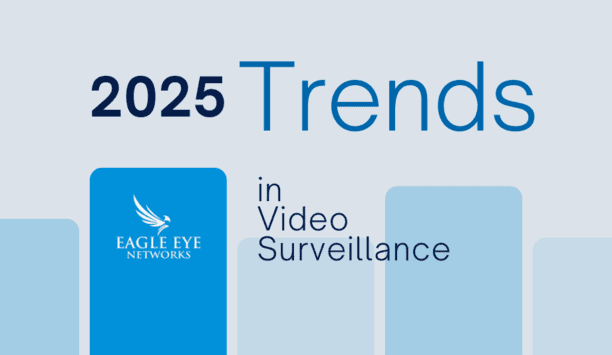
2025 Trends in video surveillance
Download
7 proven solutions for law enforcement key control and asset management
Download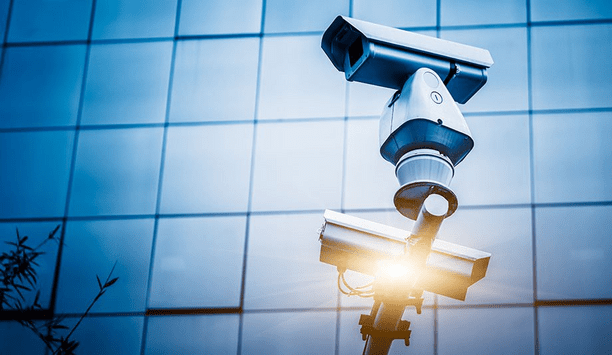
Maximising security and performance
Download
Guide for HAAS: New choice of SMB security system
Download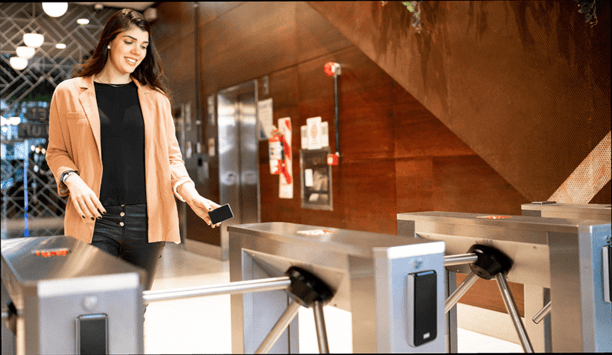
The truth behind 9 mobile access myths
Download